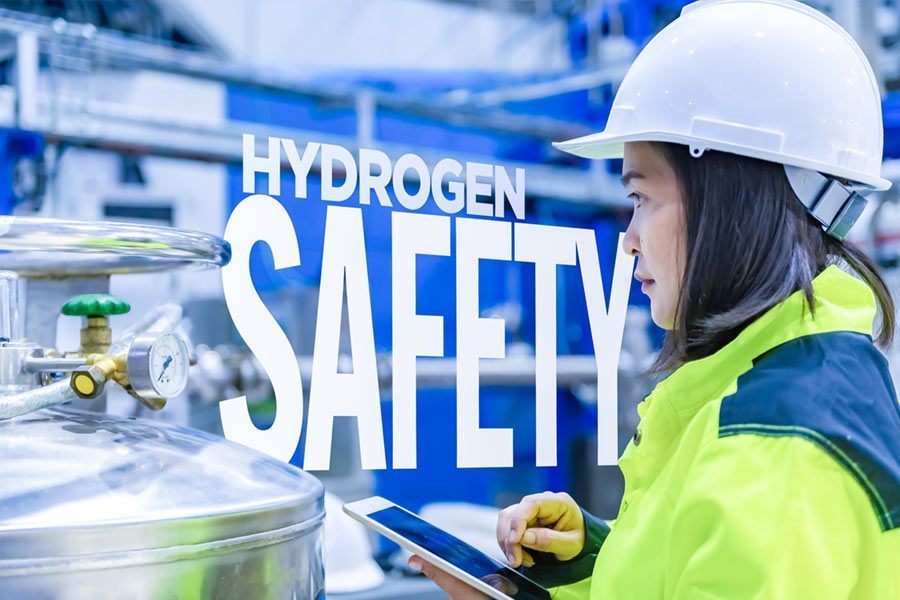Hydrogen From A to Z: S For Safety
By: GenH2 Staff
Read Time: 3 minutes
Defining The Hydrogen Economy from A to Z: S is for Safety
Continuing on in our defining the Hydrogen economy from A to Z series, we are focusing on the letter S and discussing Safety.
In the world of Hydrogen, Safety is priority; understanding and implementing safety protocols is critical to its use. Hydrogen safety is a global effort. Today, many organizations such as Department of Energy (DoE), Standards Development Organization (SDO), National Renewable Energy Laboratory (NREL) and Code Development Organization (CDO) are working together to develop codes and standards, which include safety protocols for hydrogen and fuel cell technologies, and systems needed to prepare for the commercialization of hydrogen. Adhering and developing appropriate codes, standards, and the implementation of safety protocols, along with following or addressing guidelines set out by the ANSI/AIAA American National Standard Guide to the Safety of Hydrogen and Hydrogen Systems are essential for the commercialization of hydrogen-based products and systems.
The safe use, safety protocols of any fuel or energy carrier focuses on mitigating any identified risks, including engineering controls and understanding properties to prevent any circumstances where unsafe situations might arise. Safety is specific. The volume, pressure, purity, form (e.g., gas versus liquid) location or surrounding environments, end use or application and duty cycle are also some of the considerations for the safe use of hydrogen. On understanding properties, here are a few of hydrogen’s key characteristics from the Natural Resources Defense Council (NRDC):
- Hydrogen is not toxic, unlike conventional fuels. A hydrogen leak or spill will not contaminate the environment or threaten the health of humans or wildlife, however mitigation of stopping and detecting leaks must be addressed as a part of the engineering design.
- Hydrogen is 14 times lighter than air and 57 times lighter than gasoline vapor. This means that when released, hydrogen will typically rise and disperse rapidly, reducing the risk of ignition at ground level. However, propane and gasoline vapor are heavier than air, making it more likely that they will remain at ground level, increasing the risk of fires harming people and buildings.
- Hydrogen has a lower radiant heat than conventional gasoline meaning the air around the flame of hydrogen is not as hot as the air around a gasoline flame. Therefore, the risk of hydrogen secondary fires is lower.
For hydrogen use in aviation, a reference by Brewer on “An Assessment of the safety of Hydrogen-fueled Aircraft”, states that liquid natural gas (LNG) is safter than petrol and Liquid Hydrogen is safer than LNG. The DOE has stated that “a number of hydrogen’s properties make it safer to handle and use than the fuels commonly used today.”
Fire and leak detection sensors are also an important part of safety protocols and ensuring that hydrogen becomes a part of a clean and thriving economy. To facilitate enhanced hydrogen safety, NREL is testing hydrogen sensors that detect leaks and monitor gas purity at the Safety Sensor Testing Laboratory. Because hydrogen is colorless and odorless, sensors are an important engineering requirement for safe hydrogen fueling stations, equipment, and other hydrogen facilities. Sensors can be used to detect leaks, automatically shut down systems, activate alarms, and notify emergency responders. A good example of a passive hydrogen leak detection safety system, is a hydrogen sensing tape that was collaboratively developed and commercialized by private industry, academia, and NASA.
As global efforts continue to push for and demand a clean fuel alternative, hydrogen safety will remain a key priority for research and development, production, storage, and distribution as the global hydrogen community aims to fully decarbonize future energy needs. Companies like GenH2 are proving that daily. Moving forward, industry and government institutions must continue to make hydrogen education and safety a key priority to the hydrogen economy and value chain.



